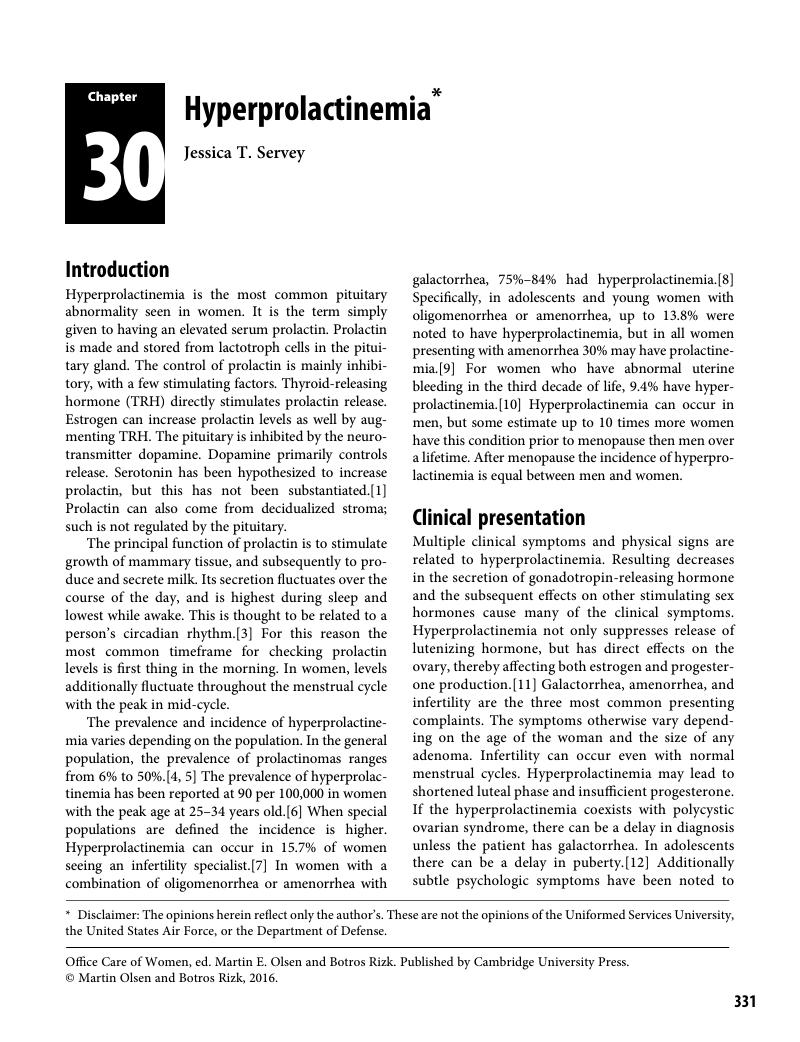Book contents
- Office Care of Women
- Office Care of Women
- Copyright page
- Dedication
- Contents
- Contributors
- Preface
- Section I Health promotion
- Section II Office interventions
- Section III Pregnancy
- Section IV Gynecology
- Section V Reproductive endocrinology and infertility
- Chapter 26 Outpatient evaluation of the infertile couple*
- Chapter 27 Outpatient infertility management
- Chapter 28 Polycystic ovary syndrome
- Chapter 29 Hyperandrogenism
- Chapter 30 Hyperprolactinemia*
- Chapter 31 Menopausal syndrome
- Chapter 32 Selected endocrine disorders
- Chapter 33 Office management of female reproductive tract anomalies
- Section VI Nongynecologic conditions
- Index
- References
Chapter 30 - Hyperprolactinemia*
from Section V - Reproductive endocrinology and infertility
Published online by Cambridge University Press: 05 May 2016
- Office Care of Women
- Office Care of Women
- Copyright page
- Dedication
- Contents
- Contributors
- Preface
- Section I Health promotion
- Section II Office interventions
- Section III Pregnancy
- Section IV Gynecology
- Section V Reproductive endocrinology and infertility
- Chapter 26 Outpatient evaluation of the infertile couple*
- Chapter 27 Outpatient infertility management
- Chapter 28 Polycystic ovary syndrome
- Chapter 29 Hyperandrogenism
- Chapter 30 Hyperprolactinemia*
- Chapter 31 Menopausal syndrome
- Chapter 32 Selected endocrine disorders
- Chapter 33 Office management of female reproductive tract anomalies
- Section VI Nongynecologic conditions
- Index
- References
Summary

- Type
- Chapter
- Information
- Office Care of Women , pp. 331 - 340Publisher: Cambridge University PressPrint publication year: 2016



